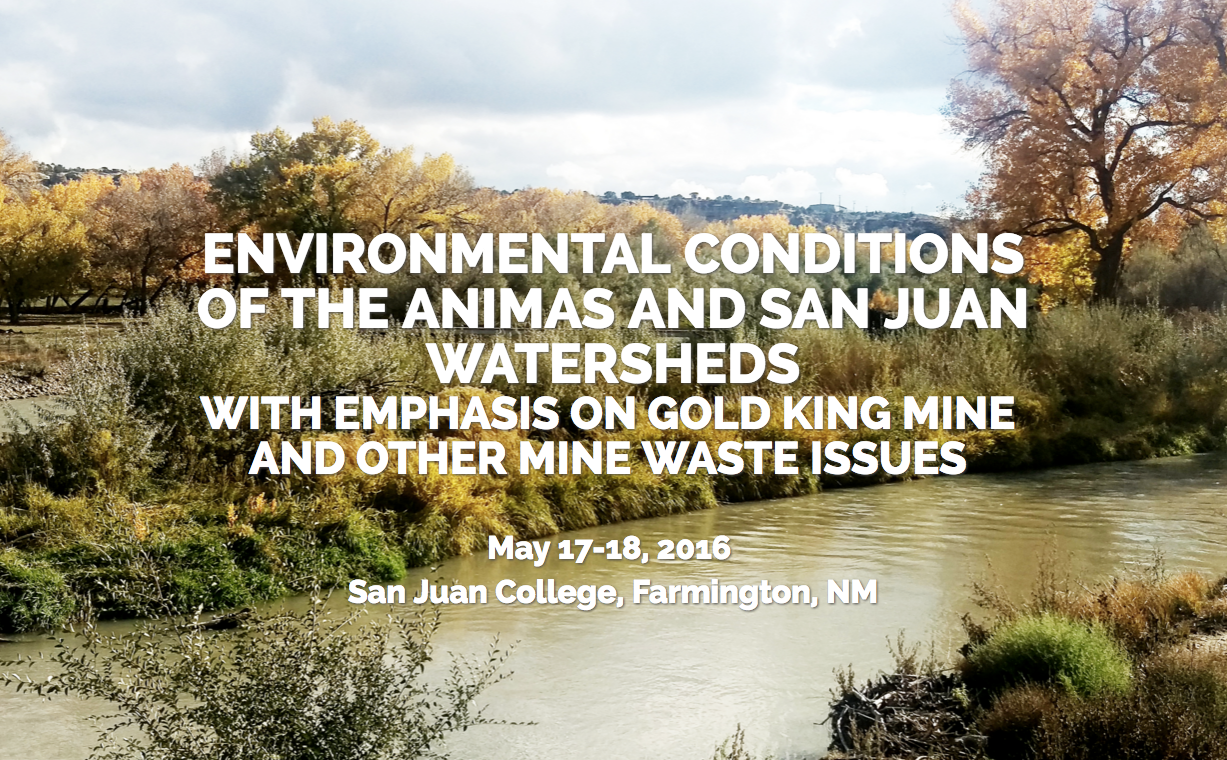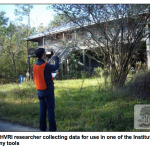Environmental Issues of the Animas and San Juan Watersheds Related to the Gold King Mine Spill
The New Mexico Water Resources Research Institute (NM WRRI) will host a two-day conference in May 2016 to facilitate the exchange of data and ideas among four states, three Environmental Protection Agency (EPA) regions, two Tribes, and numerous local and municipal agencies and public water systems. The conference will bring together an estimated 200 participants to gain a better understanding of the theme of the conference, Environmental Conditions of the Animas and San Juan Watersheds with Emphasis on Gold King Mine and other Mine Waste Issues. The NM WRRI will coordinate all aspects of the conference with the guidance of a planning committee comprised of representatives from some of the sponsoring entities. These sponsors include: NM WRRI, New Mexico Environment Department (NMED), New Mexico State University (NMSU), University of New Mexico (UNM), New Mexico Tech (NM Tech), New Mexico Bureau of Geology (NM BOG), City of Farmington, San Juan County, City of Aztec, San Juan Soil & Water Conservation District, and the San Juan Watershed Group.
The goal of the conference is to disseminate information and results from monitoring and research efforts in the Animas San Juan watershed. Particularly relevant topics to be featured at the conference include:
- Geology, minerology, ore bodies and natural sources of contamination
- Analysis of Animas and San Juan watersheds as a result of Gold King Mine spill
- Effects of acid mine drainage after more than a century of mining
- Effects of historical spill events
- Effects of the Gold King Mine spill
- Differentiating geologic and historical contaminants from Gold King Mine spill contaminants
- Transport and fate of mining contaminants in the Animas and San Juan watersheds
- Contaminant uptake into the food web
- Mining contaminant impacts on surface water, sediment, groundwater, agriculture, livestock, wildlife, and humans
- Long-term monitoring
- Existing corrective measures to control mine seepage and hydraulic consequences
- Options for additional source control, spill prevention, and remediation
- E. coli and other organisms in nutrients
The conference will support the activities outlined in the Long-Term Monitoring Plan: Evaluating the Effects of the Gold King Mine Wastewater Spill in Northern New Mexico, prepared by the State of New Mexico’s Long-Term Impact Review Team (draft report, October 20, 2015). The conference will bring together academics, agencies, representatives, and community members and provide a forum for addressing concerns and questions over the Gold King Mine spill and the continuing monitoring efforts.



Leave a Reply
Want to join the discussion?Feel free to contribute!